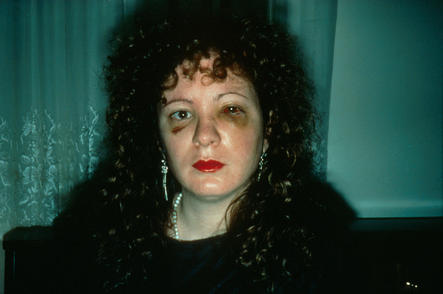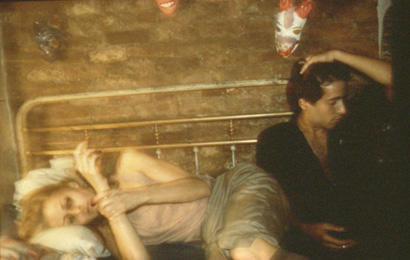Introduction
After the major wars in the 19th and 20th centuries, museums were set up for photography and this trend continues even in contemporary times. Photographers started breaking free from the repressive structures of taking straight artistic and documentary expression pictures. The documenters then begun to probe the social landscape, which mostly mirrored their real life experiences – the fretfulness and alienation of the urban lifestyle.
Consequently, these introspections caused increased personal form of documentary photography. Many young photographers then felt that the documentary aspect was better than collage and multiple images. Because of the message that photography communicates, it has been used to expose some truths that can even be used for solving crimes.
This paper compares Weegee and Goldin’s photography to address the connection between the middle years of the twentieth century, when photography began to expose realities in life, and the modern distrustful era.
Capturing Reality
Both Weegee and Goldin are of American-Jewish decent (Mirzoeff 78). Both their works mainly feature the east coast city life and cover a wide range of themes, but in essence concentrated on violence, crime, and sexual transgression (Blair 2). Both these build their reputation from photography and essay books (Mirzoeff 78).
Arthur Fellig, herein referred to as Weegee, (His famous nickname) became famous because of the Naked City book in 1945 and photography in it. Nan Goldin came to the limelight after writing The Ballard of Sexual Dependency in 1986 (Blair 2). It is also fascinating to note that, both these artists featured photographs of Duke and Duchess of Windsor as a unique example of romantic passion (Mirzoeff 78).
Besides the named similarities, these artists had some differences because of their attitude towards their works. While Weegee mainly used his camera as a tool of voyeurism, Goldin often turned the lens on herself, probably because she felt guilty to intrude where she was not accepted or little known (Mirzoeff 78).
In most of photography that Weegee did, he depicted the city’s underclass lifestyle – the environment where he had grown up (Keller 8). The images of people at a crime scene or a beach helped Weegee reveal the squalor, brutality, and rawness of life in the City (Fellig 10).
Weegee was a shameless voyeur who exploited the sensational event and humanity degradation to expose real life in urban centres (Mirzoeff 78). Some people describe him as compassionate based on the photographs taken, and he helped solve crimes in his city- crime lifestyle he could easily have fallen in during his days (Mirzoeff 78). Therefore, photography helped him escape this lifestyle (Fellig10).

Source: Amber Online.
The crowd seems to have turned to look at the camera, which was at an elevated position. This picture depicts beachgoers crowded on the beach under the noonday sun. This startling picture encompasses bodies of people just bashing and carefree. The photographer has weird focus and specifically brings to bear the raw dispassion of his assault work and previous crime scene shots (Mirzoeff 79). This photograph literalizes the apercu that each photograph was a possible crime scene.
Weegee also photographed New York population, especially those who loved partying and active life in the city (Keller 8). He hence captured the city life as an arena where people acted out their lives and obsessions (Fellig 10). The famous crowd at Coney Island is one such classic example of his photographs.
Instead of focusing on crowds and crime scenes, Nan Goldin by contrast was obsessed with personal intimacy. She did not take photographs of strangers, and all of them had consent that their photographs were being taken. Therefore, this allowed her photography to be a record of private lives of people close to her. She made this art by exhibiting them. This works change the photography mode conducted by Weegee from voyeur to witness (Mirzoeff 79).
This simply means that a witness takes part in the scene and later reports on it. The witness can be seen on be hidden. However, voyeur specifically means that the capture of the picture is trying not to be seen. Goldin in essence takes her photograph indoors in contrast to Weegee who liked outdoor activities or public places (Keller 8). This way, Goldin ethically testifies to the existence of the realities of sex, drugs, and other intimacies (Mirzoeff 79).
Goldin’s documentary works is about her life and her friends’ relationships, which she is also involved. Inevitably, this meant documenting her life, as well. Sometimes, the picture documented unusually intimate moments where the camera can only capture the physical and not emotional bareness (Goldin “Devil’s Playground” 2).
The pictures reflect realities in life. They are pictures of experiences in her life and her experiences with others close to her. Her self-portraits are a proof of the tough times in her life, which was full of drugs and violence as well as love and passion.

In one of Goldin’s photographs shown above, her boyfriend had battered her so badly that she almost became blind. This battering incident was a serious violation of her healthy life. This also marked a significant stage in her life. It shows the dangers of a clingy and possibly destructive relationship.
Years later, she realized the self-destruction she was causing to herself, and she went to study. She was determined to quit drugs, and in that bold step, she had to leave the documentary photography of sex, drugs, violence to documentaries of hope, happiness, and the abundant life (Goldin “The Ballard” 1).
From the rehabilitation centre, Goldin begun to live a settled life and she moved from her previous house and dropped use of drugs as her source of inspiration. It can be affirmed that indeed Nan Goldin’s work uniquely captured realities of life. Her photographs were impulsive and uncut.
These characteristics helped her to capture with insight and sincerity, the glamour and pathos of urban life subcultures (Goldin “The Ballard” 1). Her works have helped to expose the urban-social problems ranging from drugs to drag queens. There are many unrefined truths of human relationships, lifestyle, and death.

Goldin celebrates lives of people by going back to their stories decades later. She has captured couples in intimate movement, people taking drugs to friends dying of AIDS. Therefore, she has not failed to capture any human condition.
It is sad to note that many of the people she photographed in 1970s and 1980s died of AIDS. This deadly disease was discovered only few years after she quit drugs and dirty lifestyle. Her works hence depicts a tremendously fundamental lesson to humanity. Drugs and sexual intimacies can be particularly dangerous. Nearly all the drag queens Goldin ever stayed with disappeared as well as the other faces she documented in the Ballard.
This must have inspired her to make the Heartbeat, which was a more positive approach to what life offers. This documentary is primarily about babies and children. They are mainly a symbol of renewed hope. All this shows that Nan Goldin has gone full cycle of describing real life highlighting themes of deaths, love, violence, sickness, hate, and happiness.
Punctum and Studium
Roland Barthes has identified two features in photographic that make it striking to the viewers. One of the features in the stadium, it is the element, which draws attention or captures the interest of the observer (Roland 12). It also exposes the intention of the photographer but the viewers have to interpret it.
Looking at the Picture of the crowd at Coney Island, the picture capture people having fun on the beach, this brings out the feeling that many activities are taking place among the crowd. Observers culturally get involved in the activities, setting and gestures in the picture (Roland 12). The picture of buttered Nan Goldin produces the same effect where the plainness of pain is expressed through the scares on her face.
Puntum is the second element. It is used to describe the uniqueness of an image or object in a photograph, which captivates the imagination of the viewer. Punctum and stadium can exist together, but punctum causes the disturbances, thus creating an element, which rises from that specified object or scene to cover the entire image unintentionally (Roland 14).
Punctum is the rare image that attracts an individual to the picture. This makes it a particularly powerful feature of a photograph – very powerful and compelling to viewers. This changes the notion of the observer from liking to loving the image. Everyone has different punctum, as this scenario is normally highly personal (Roland 14). It could be something that stimulates childhood memories to a theme that inspires reflection on personal life.
Conclusion
Although documentary photography is taking new shape in the modern era, photographers still have the unique mania, an obsession of capturing every little sparkle or emotion that is encountered in their lives. This phenomenon is specifically noted by Nan Goldin from her Ballad of Sexual Dependency, under the preface where she declares that the people in her pictures said the camera was part of her and part of them being with her like other aspects of getting to know her.
It is as if her hands were in the camera. She says if it were possible, she would have loved to capture the moment without any mechanism between her and the moments. The camera is part of her like talking, having sex, or eating. This makes the moments part of her lifestyle. On the other hand, Weegee talks fondly of the Coney Island images.
In his book, he says that, Saturday was unusually hot, so he thought that following day would be the best for making crowd shots. The following day he arrived at the Island unusually early for the pictures. These statements give him a connection to the place he knew very well. Photography hence renders certain social realities monumental importance.
This is particularly true when these realities affect certain group of people in the society, like those with deviant behaviour. In this case, Goldin seems to capture reality better than Weegee. She has managed to focus on drug users and drag queens who are mostly her friends, as well.
Insofar as the photographs were personal, they conveyed a remarkably strong, social, and political message to the audience. The message being that, drug abuse is taking a toll on young people and many are suffering in impoverished existence portrayed by hollow eyes, unmade beds, and dirty sheets and peeling wall paints.
Works Cited
Amber Online. Weegee collection. Crowd at Coney Island, 1945. Web.
Blair, Sara. “Jewish America through the Lens.” Jewish in America 42.1 (2003): 2-11.
Fellig, Arthur. Naked City. New York: Essential Books, 1945. Print.
Goldin, Nan. Devils Playground, 1986. Web.
Goldin, Nan. The Ballard of Sexual Dependency, 1989. Web.
Keller, Judith. Weegee: Photographs from the J. Paul Getty Museum. Los Angeles: Getty Publications, 2005. Print.
Mirzoeff, Nicholas. The Age of Photography (1839-1982): An Introduction to Visual Culture, 1999. London: Routledge Taylor and Francis. Print.
Roland, Barthes. Camera Lucida: Reflections on Photography. New York: Hill and Wang, 1982. Print.